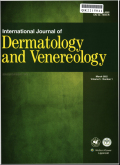Cutibacterium acnes in Atopic Dermatitis: Roles and Potential Therapeutic Applications
Cutibacterium acnes in Atopic Dermatitis: Roles and Potential Therapeutic Applications
摘要Atopic dermatitis (AD) is a chronic relapsing inflammatory skin disease. The main initiating mechanisms of AD are disruptions in the skin microbiota, dysfunction of the skin barrier, and predominantly elevated type 2 immune responses. Cutibacterium acnes (C. acnes) is a commensal bacterium that is ubiquitous and predominant in healthy skin and shows intraspecific subtype diversity. The abundance of C. acnes is closely related to the sebum secreted by sebaceous glands. C. acnes has long been considered a proinflammatory skin bacterium that drives the development of acne vulgaris. Growing evidence indicates that C. acnes promotes skin microbiota homeostasis and skin barrier maintenance; however, the potential role of C. acnes in AD remains largely unexamined. This review provides the latest information on the distribution of C. acnes and its phylotypes in healthy skin and AD as well as an overview of the possible role of C. acnes in the pathophysiological pathways underlying AD. Additionally, the review focuses on new evidence regarding the protective functions of C. acnes and its metabolites in AD and discusses the potential for therapeutic applications.
更多相关知识
abstractsAtopic dermatitis (AD) is a chronic relapsing inflammatory skin disease. The main initiating mechanisms of AD are disruptions in the skin microbiota, dysfunction of the skin barrier, and predominantly elevated type 2 immune responses. Cutibacterium acnes (C. acnes) is a commensal bacterium that is ubiquitous and predominant in healthy skin and shows intraspecific subtype diversity. The abundance of C. acnes is closely related to the sebum secreted by sebaceous glands. C. acnes has long been considered a proinflammatory skin bacterium that drives the development of acne vulgaris. Growing evidence indicates that C. acnes promotes skin microbiota homeostasis and skin barrier maintenance; however, the potential role of C. acnes in AD remains largely unexamined. This review provides the latest information on the distribution of C. acnes and its phylotypes in healthy skin and AD as well as an overview of the possible role of C. acnes in the pathophysiological pathways underlying AD. Additionally, the review focuses on new evidence regarding the protective functions of C. acnes and its metabolites in AD and discusses the potential for therapeutic applications.
More相关知识
- 浏览27
- 被引0
- 下载0


相似文献
- 中文期刊
- 外文期刊
- 学位论文
- 会议论文



 换一批
换一批 换一批
换一批



